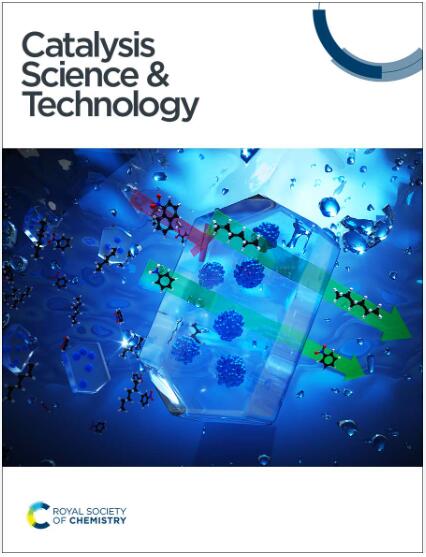Deciphering the role of (metal–)support on the reductive amination of levulinates
IF 4.4
3区 化学
Q2 CHEMISTRY, PHYSICAL
引用次数: 0
Abstract
Biomass-derived levulinic acid (LevuA) and its esters are key intermediates for producing high-value pyrrolidones, such as N-substituted-5-methyl-2-pyrrolidones (NSMPs), through reductive amination. These compounds have promising applications in industries ranging from petrochemicals and polymers to pharmaceuticals, agrochemicals, and textiles. Significant research has focused on developing catalytic systems using both precious (e.g., Pt, Pd and Rh) and non-precious metals, which are highly active due to their efficient H2 activation and intermediate activation properties. However, the catalytic performance of these metals can vary significantly depending on the nature of the support material. Understanding the behaviour of supported metal, the properties of the support, and their interaction is crucial for optimising reductive amination processes. This review examines the roles of both precious and non-precious metals in intermediate and H2 activation on the catalyst surface. It also explores how the intrinsic properties of the supports – such as acidic, basic and neutral characteristics – affect catalytic performance. Key factors like the formation of frustrated Lewis pair (FLP), surface acidity, and structural features (e.g., morphology, exposed facets and particle size) are discussed to comprehensively understand their influence on the catalytic process. Finally, the review concludes with an analysis of the current challenges and perspectives, highlighting the need for further development of efficient, stable, and industrially viable catalytic materials for the reductive amination of bio-based carbonyls.

破译(金属)载体在乙酰丙酸酯还原胺化反应中的作用
生物质衍生乙酰丙酸(LevuA)及其酯是通过还原胺化反应生产n -取代-5-甲基-2-吡罗烷酮(NSMPs)等高价值吡罗烷酮的关键中间体。这些化合物在石油化工、聚合物、制药、农用化学品和纺织品等行业都有很好的应用前景。重要的研究集中在开发使用贵重金属(例如Pt, Pd和Rh)和非贵重金属的催化系统上,这些金属由于其高效的H2活化和中间活化特性而具有高活性。然而,这些金属的催化性能会根据支撑材料的性质而有很大的不同。了解支撑金属的行为,支撑的性质,以及它们之间的相互作用是优化还原性胺化过程的关键。本文综述了贵金属和非贵金属在催化剂表面中间体和H2活化中的作用。它还探讨了载体的内在性质——如酸性、碱性和中性特征——如何影响催化性能。讨论了挫折路易斯对(FLP)的形成、表面酸度和结构特征(如形态、暴露面和粒径)等关键因素,以全面了解它们对催化过程的影响。最后,对目前面临的挑战和前景进行了分析,强调了进一步开发高效、稳定、工业可行的生物基羰基还原胺化催化材料的必要性。
本文章由计算机程序翻译,如有差异,请以英文原文为准。
求助全文
约1分钟内获得全文
求助全文
来源期刊

Catalysis Science & Technology
CHEMISTRY, PHYSICAL-
CiteScore
8.70
自引率
6.00%
发文量
587
审稿时长
1.5 months
期刊介绍:
A multidisciplinary journal focusing on cutting edge research across all fundamental science and technological aspects of catalysis.
Editor-in-chief: Bert Weckhuysen
Impact factor: 5.0
Time to first decision (peer reviewed only): 31 days
 求助内容:
求助内容: 应助结果提醒方式:
应助结果提醒方式:


